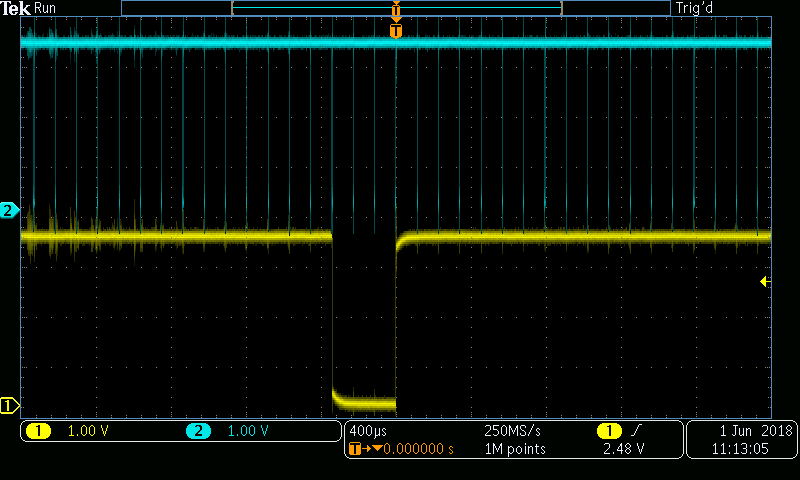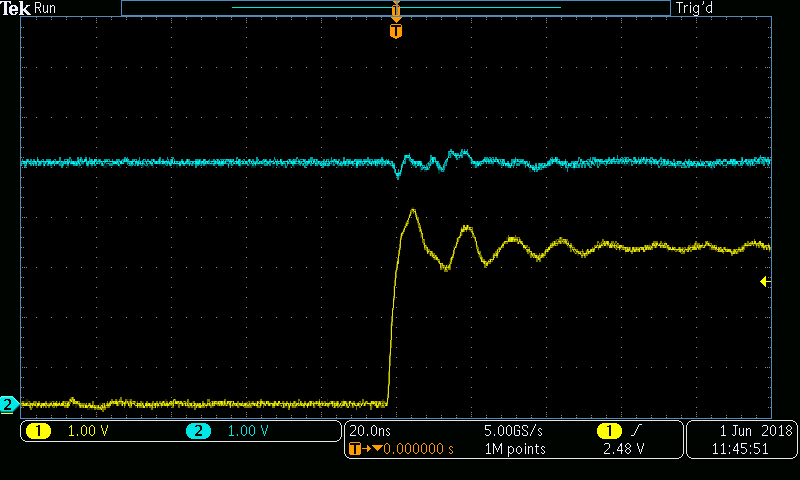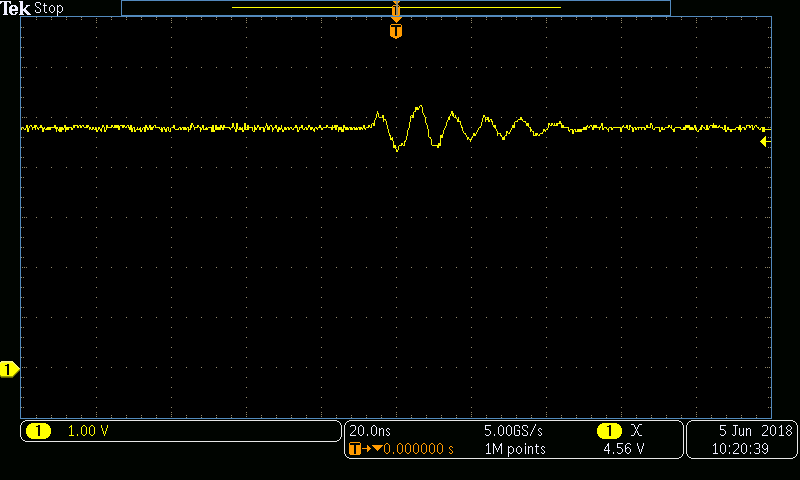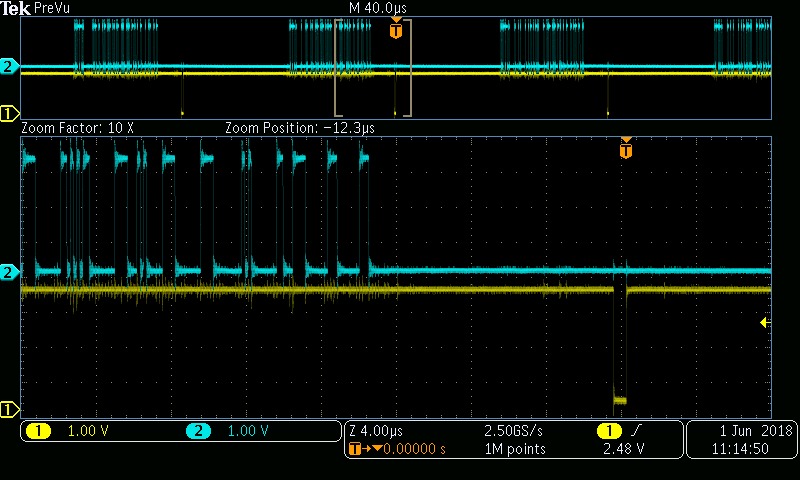Other Parts Discussed in Thread: DLPC2607, TPS62260, DLPA1000, DLP2000
Hello again,
I'm playing with the 2000EVM on a Beagle Bone Black (direction connection) and had a couple of design questions for you. The first pertains to ringing caused by the V_Sync and H_Sync pulses. There don't appear to be any limiting resistors between the Sitara AM335x and the DLPC2607 -- and I couldn't find any mention (I could have missed it) in the datasheet for the DLPC2607 indicating how the HSync and VSync inputs are tied to the power. But the Sitara mentions that it can sink 6mA, and by the looks of the ringing in the signals, it sure is trying.
(VSync, Channel 1, Yellow) (HSync, Channel 2, Cyan)
So I next hooked up channel 2 to the VINTF supply and triggered off of the VSync signal (still channel 1), and saw the ringing made it through to the supply line.
That seemed like a lot of ringing -- so I went one step further. I wanted to know how much power-line ringing would cause a problem. And the answer is -- not a lot. I issued the I2C commands to stream-out the BBB display, and then injected a similar signal into the power supply line as the one I saw above. It didn't long to cause a reproducible reset condition (Lightcrafter display would blank, then show splash screen). I would then resend the I2C commands to reset the display, and send the pulse, and it would turn off. Worked a dozen times in a row, so I stopped trying. BBB was provided the same power input and stayed on. (So the boards had the same ground reference). And just to clarify -- the cyan above is VINTF, and they yellow below is DCIN.
So really, I suppose I have a few questions:
1) Why didn't the engineers use any current limiting resistors (or damping/snubbing) on the sync signals? Was it intentional or an oversight?
2) What is causing the display to reset? There is one LDO, two step-down converters (TPS62260), and the DLPA1000 Asic -- all of which have output voltages that are much, much less than the input, and I would think would be immune to an incredible amount of noise -- certainly more than I provided here.
3) Am I missing something?
Thanks,
Mark





